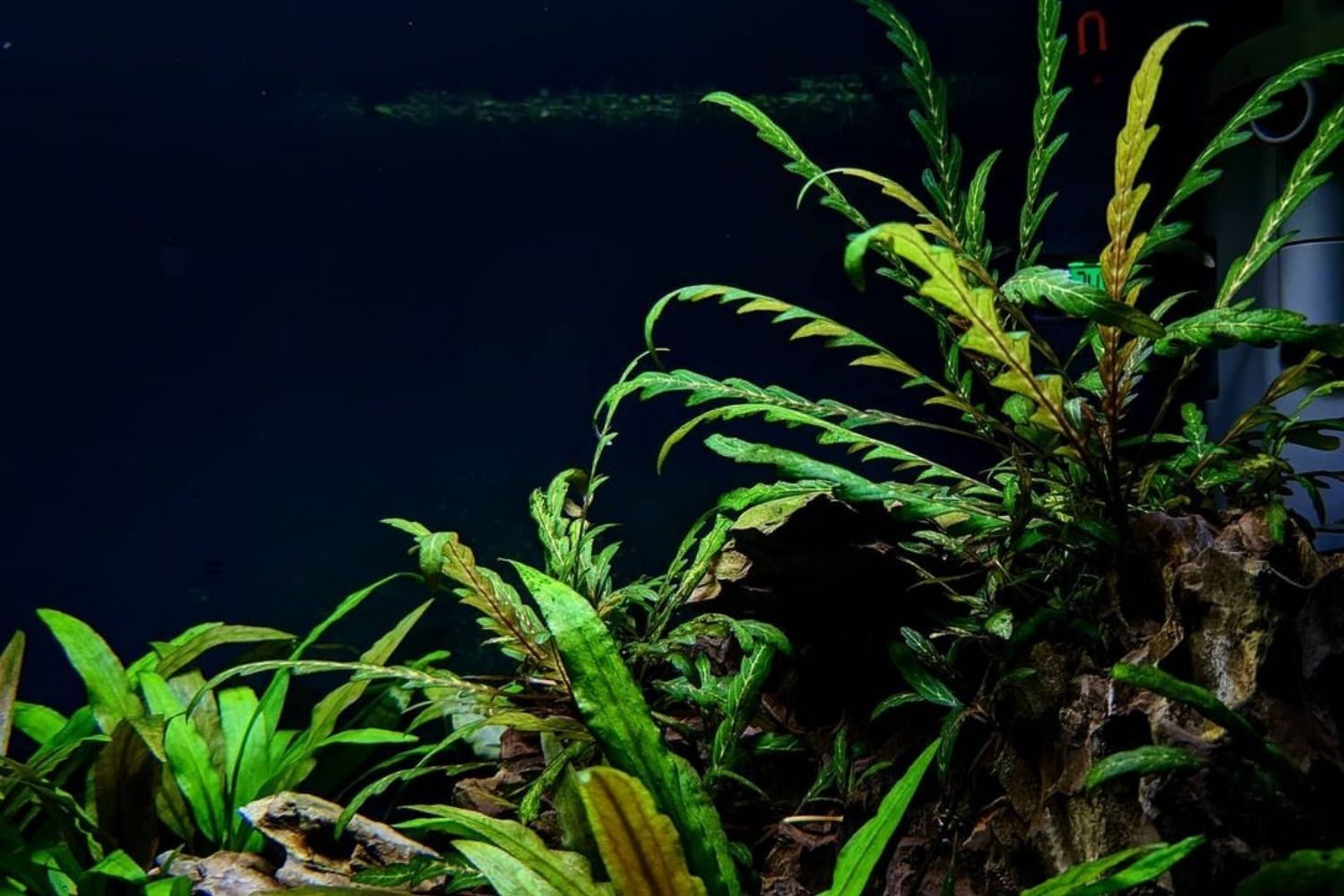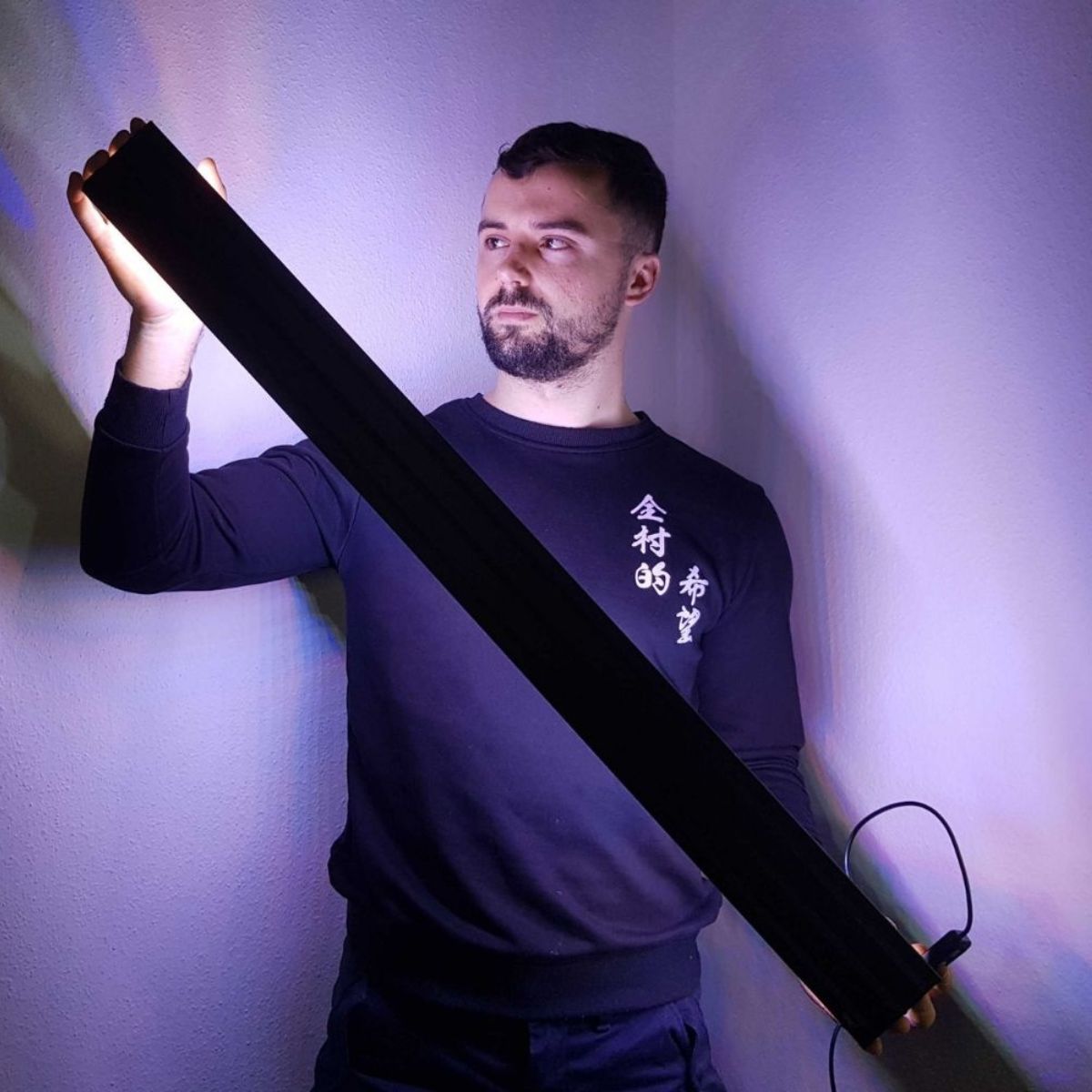Hygrophila Pinnatifida (H. Polysperma) is a relatively new plant to the aquarium trade and has quickly become one of the most popular plants available due to its unique leaf shape and vibrant coloration.
Hygrophila Pinnatifida care can be complicated, but this guide will walk you through everything from light requirements to substrate recommendations so that you can take your tank to the next level with these beautiful plants!
Curious about how much light they need? What type of substrate should I use? How do I prune them?
This guide will help you understand what this plant needs to thrive and how to care for it properly. Read on for all the information that you need about caring for Hygrophila Pinnatifida in your home aquarium!
| Care difficulty | Medium |
| Family name | Acanthaceae |
| Native to | India |
| Lighting | Medium to high |
| pH | 6-7.5 |
| Requirements | Supplemental CO2 and good nutrition |
| Temperature | 64 to 82 °F (18 to 28 °C) |
| Growth rate | Medium |
| CO2 | Recommended |
| Propagation | Cut stem, new growth, or lateral shoots |
| Placement in tank | Adaptable when trimmed. If left to grow, needs space at the back |
Origin & Habitat
The origin of Hygrophila Pinnatifida is from India and is a plant that has been known for more than 150 years, even though it started to be cultivated as a tank plant in 2008. But this plant is still a rare species for the moment. This wonderful aquatic plant was brought from India. At the bottom of Western Ghats in the tideland, you can find Hygrophila Pinnatifida growing in streams.
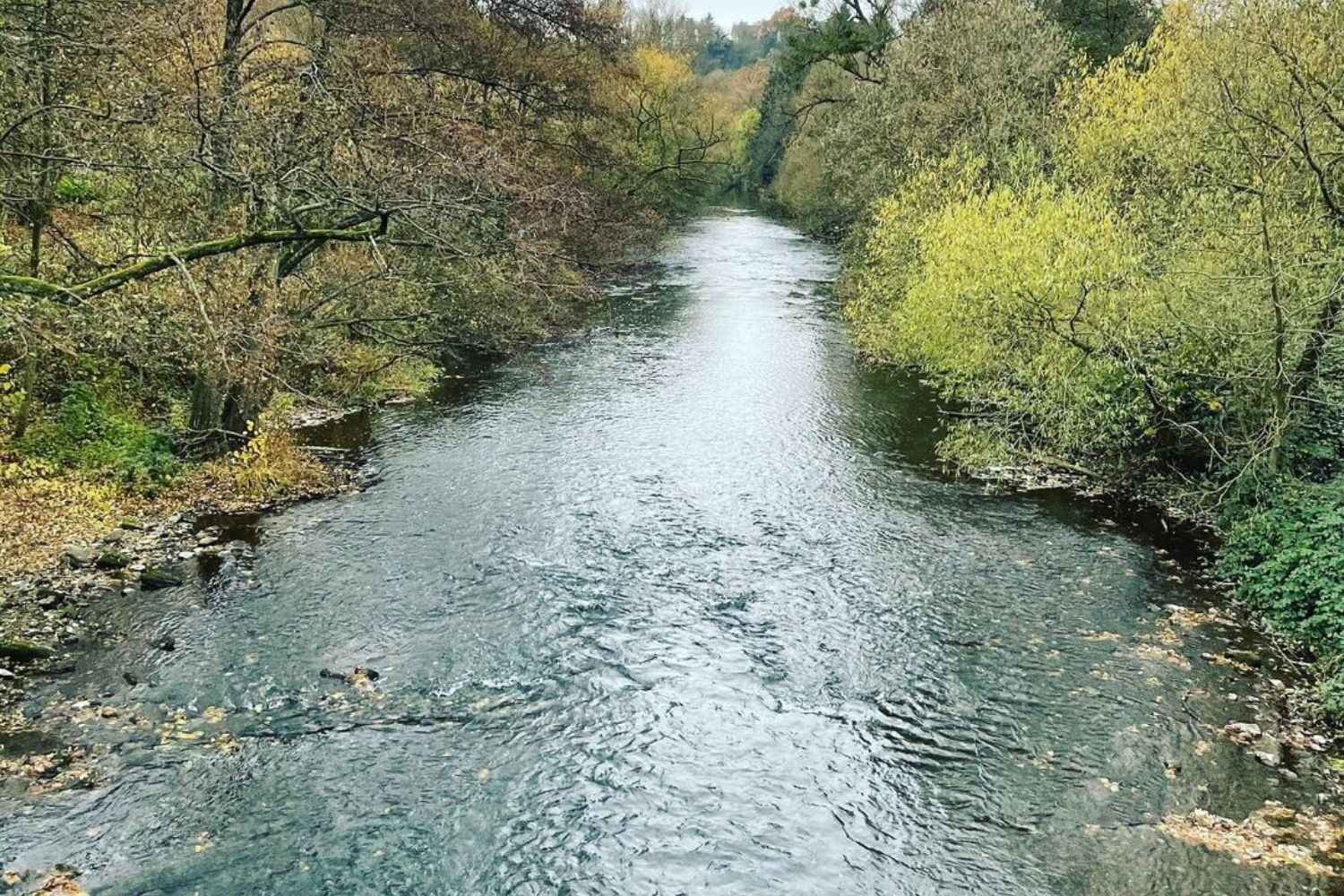
River in India, natural habitat of Hygrophila Pinnatifida.
Appearance: Why does it change colors?
This beautiful plant has brown, patched leaves on the surface of the tank and a distinguishing red color underneath. Also, this plant creates vertical side shots. The top shots have to be taken out in order to keep the compact and attractive growth. The horizontal shots usually attach to rocks and wood. The average growth of the stems is 10-40 cm tall and 10-20 cm wide, and it has attractive colors if you plant it in small groups with a clear background.
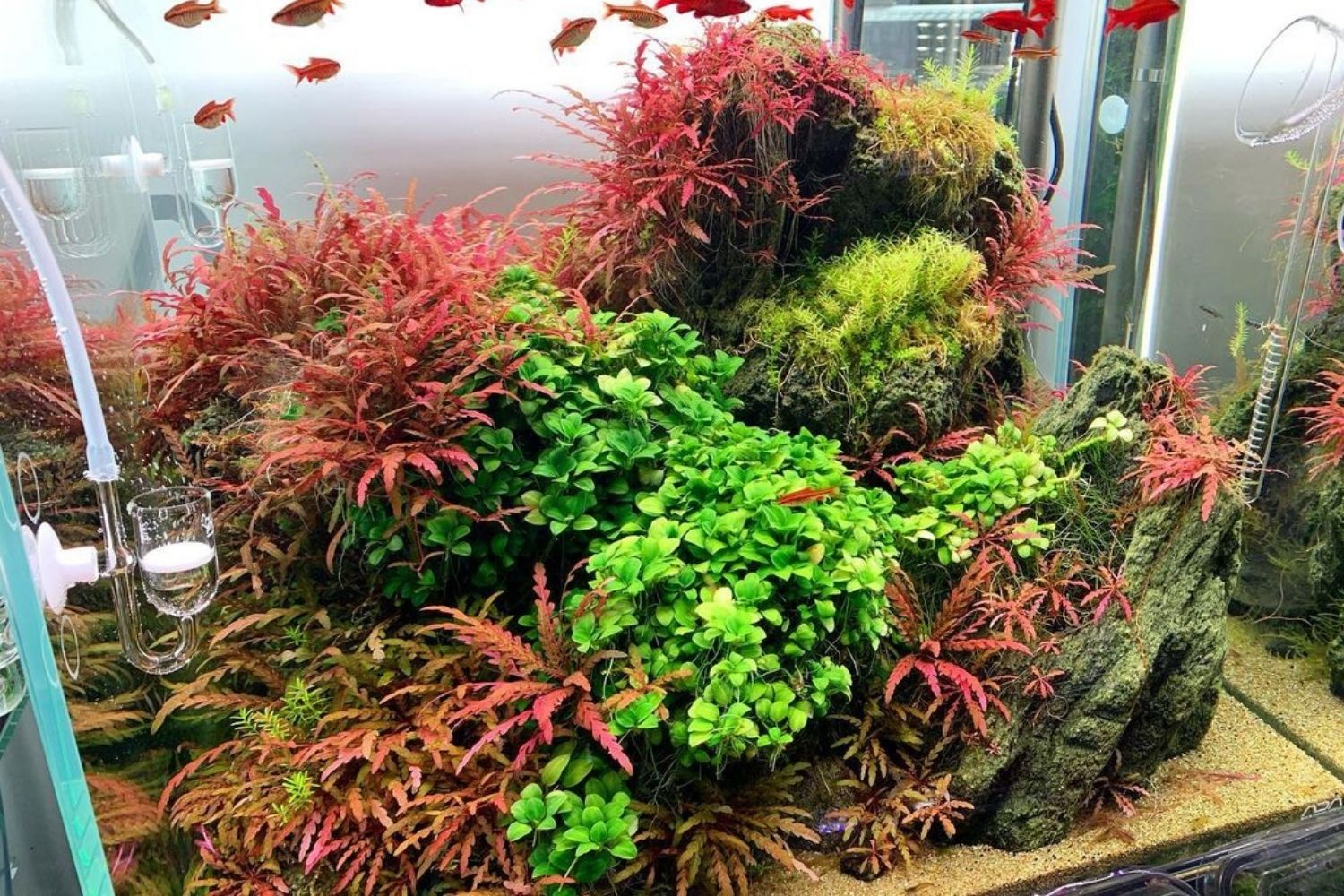
Hygrophila Pinnatifida can be found in Red and Green light. It depends on nitrogen and light condition.
The intense light secures the plant’s slow to medium growth rate.
They have a very attractive deep red color when it has very low nitrogen conditions. If the plant has low light conditions, it will stay green, and if it has higher light, it will be red.
Other Hygrophila Plants: Alternative to Pinnatifida
There are also other plant alternative to Hygrophila Pinnatifida:
- Hygrophila Corymbosa – this is a rough and rugged plant but still has stems and leaves that make it look sweet. It has fuller oval leaves and gets red in high light.
- Hygrophila Difformis – is easier to take care of, grows faster, and has a branch leaf shape.
- Hygrophila Guianensis – this type is shorter than the others. Its more difficult to care for because it requires very bright light, CO2, plenty of room, and a nutrient-rich substrate.
How to Plant and Trim It
This adaptable plant can be grown with and without soil, submerged and emersed. It is tried to plant the stems into the soil and as well in rock and wood. In all of these cases, the stems started to root and harbor themselves. If the plant has high lightning, the stems will stay short. Also, you can use the shots you cut to replant them or leave them to grow by themselves. But if you cut the stems horizontally, the new growth takes a longer time.
This plant can be cultivated by cutting. After trimming the plant, it will form a lot of side branches at the place where you made the cut. When the plant has good conditions, it will form horizontally growing shoots that will strike roots.
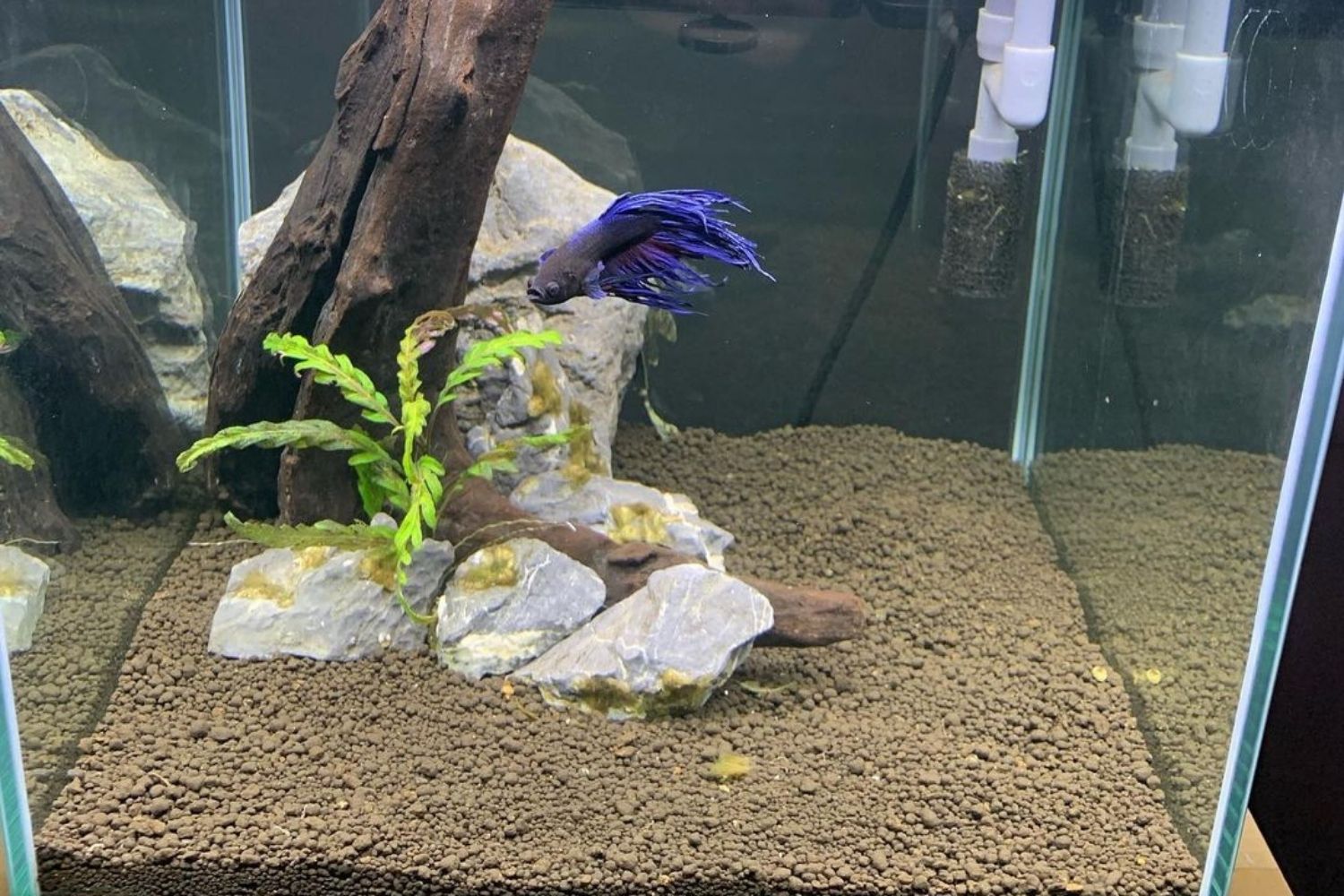
Plant Hygrophila Pinnatifida near rocks or woods and it can create a beautiful look at your tank.
This plant is one of the easiest plants to trim. You have to cut off the above stem, the slender part between two nodes, this way, the plant will grow smaller plants at the remaining internodes. If you don’t want that plant to grow all over your tank, you should cut it regularly. You can replant plantlets very easily, even in a small size.
Grow, Care and Maintenance
This plant is not that easy to maintain and take care of. In order to do so, you should consider some essential things that will help the plant thrive and grow healthy.
Tank Size
This plant is preferred to thrive in nano aquariums. Therefore, it is great for medium tanks as well. It is most effective when cultivated in small groups in the middle ground of the tank, having a calm background, in order to provide the proper space for its special leaf form and create a stunning pattern.
Water Parameters
This plant can grow submerged or emersed, with and without soil. Therefore, the water parameters are very important and vital for this plant. When taking care of it, you should consider a temperature of 64 to 82 °F (18 to 28 °C). The pH level should be from 6 to 7.5, and an interval of 2-12 dKH.
Lighting, CO2, and Fertilization
Hygrophila Pinnatifida will do fine under moderate light. However, intensive lighting will help for compact growth. However, the plant size will become smaller if you overexposure it to light.
It is recommended to have good nutrients and a CO2 system for Hygrophila Pinnatifida to thrive m. Therefore, the potassium level should not fall to the bottom. A low level is acceptable to avoid the pinholes in the older leaves.
The substrate is not that important because this plant forms a not very deep root system and attaches to sand or gravel grains.
Propagation Tips
The runner-like lateral shoots are the perfect candidate for propagation. The top shoot cuttings, compared to the lateral shoots, can develop poorly. The plant can already sprout roots or small plants from emersed cultivation, which tends to establish faster compared to rootless cuttings.
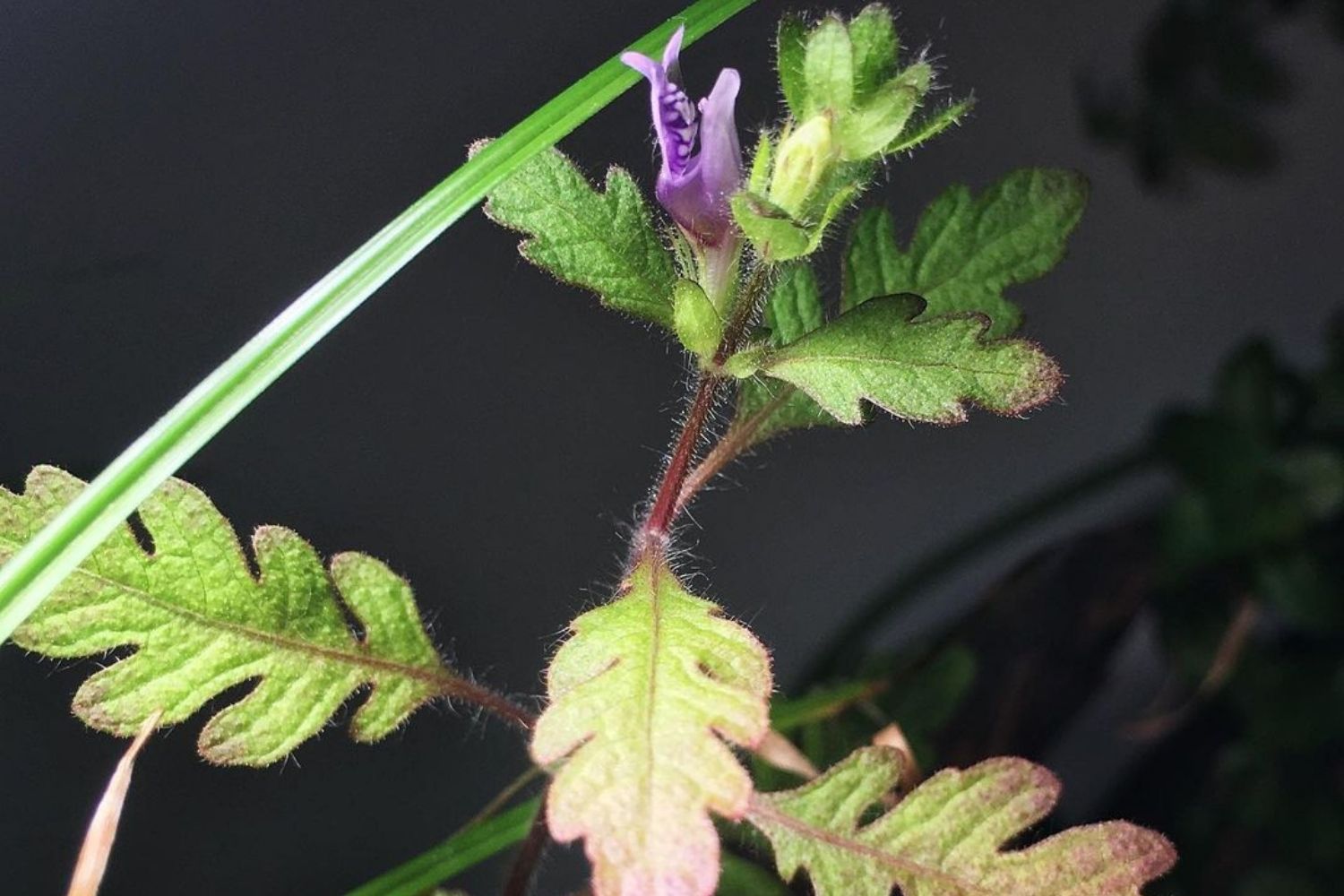
Hygrophila Pinnatifida natural propagation.
Pinhole Problem
This is the most common issue that Hygrophila Pinnatifida has. They are referred to as “potassium hogs,” This issue occurs mainly from potassium deficiency. Therefore, this doesn’t mean that you should raise too much the level of potassium. It’s not needed.
Ideal Tank Mates
Hygrophila Pinnatifida is part of the very low-growing plantlets that can easily develop at the end of the runners and foreground in groups. As we know, this plant has a dark color spectrum, and with neighboring bright plants, the intensive red hues can easily upstage it.
This plant is very friendly, and it can share the tank with:
- Peaceful Fish. It is a very good idea to add some friends to this plant, in the company of fish that won’t harm it. Also including Neon Tetras, Odessa Barb, Black Moor Goldfish, Panda Loach, blue wagtail platy, Panda Garra, etc.
- Shrimp. Shrimp species, including Neocaridina species like Snowball shrimp, Blue Velvet Shrimp, Black Rose, Green Jade, Orange Sakura, Green Jade, Rili Shrimp, etc.) or even Caridina species. Since this plant regenerates itself, it can get along very well with shrimps.
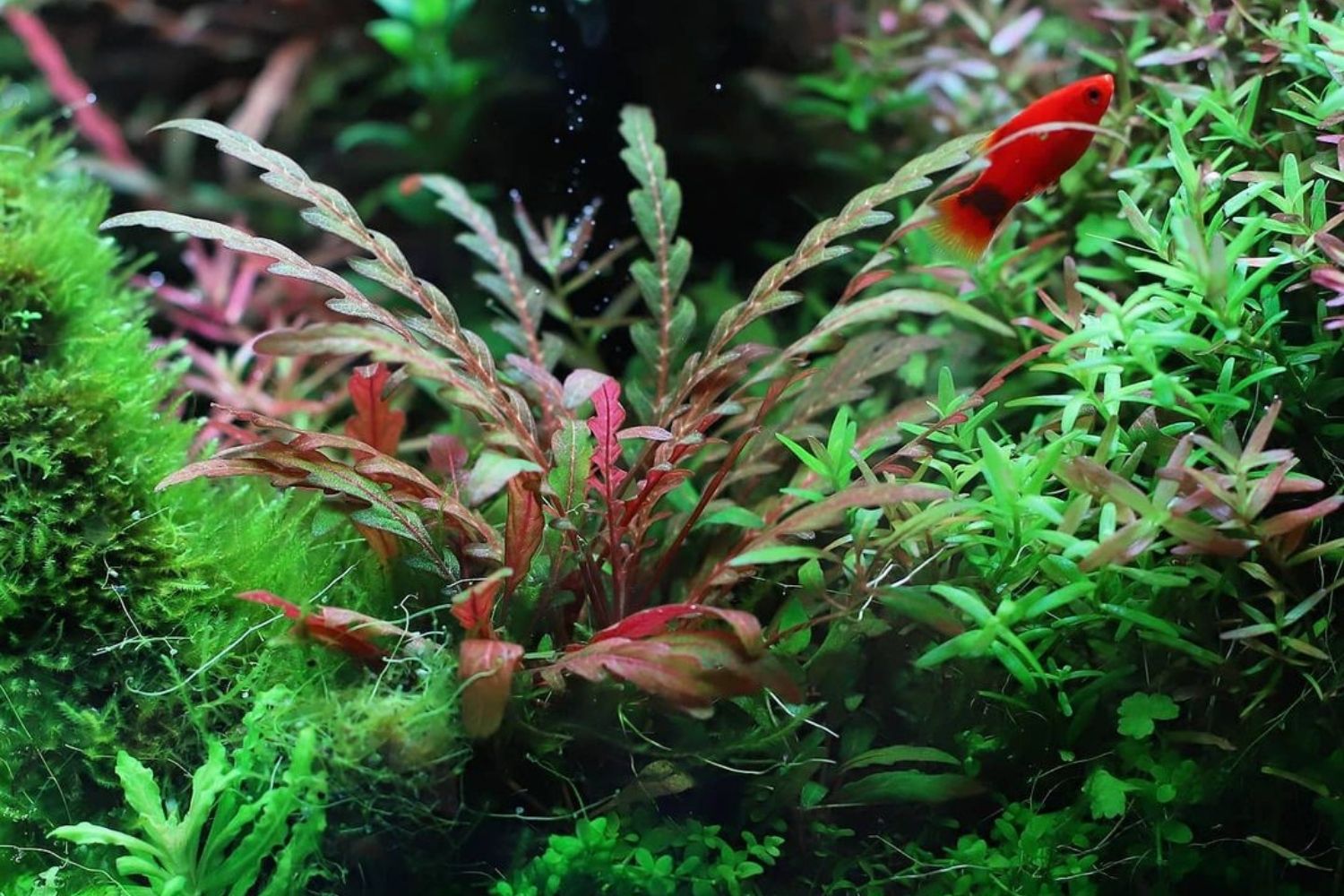
Hygrophila Pinnatifida and a peaceful fish. Notice this plant unique colors.
Hygrophila Pinnatifida can be kept together with Bacopa Caroliniana and create a perfect combo. Both of these plants would create a great design, the shape of Bacopa Caroliniana would be a perfect fit with this plant. Therefore Subwassertang would be a great choice. Its bright lights would make a great contrast in your tank.
Conclusion
Hygrophila Pinnatifida will enchant your tank with its bottom pink/red leaves. As soon as you learn to take care of it, thanks to our guide, you will be able to experiment with its colors based on this plant’s requirements.
This is an amazing plant to take care of, even though it has a medium level of difficulty and is not suggested for beginners. You decide how to design its growth as a bush or let it grow long. Therefore, it is easy to trim and can be cultivated by the trimmed pieces.
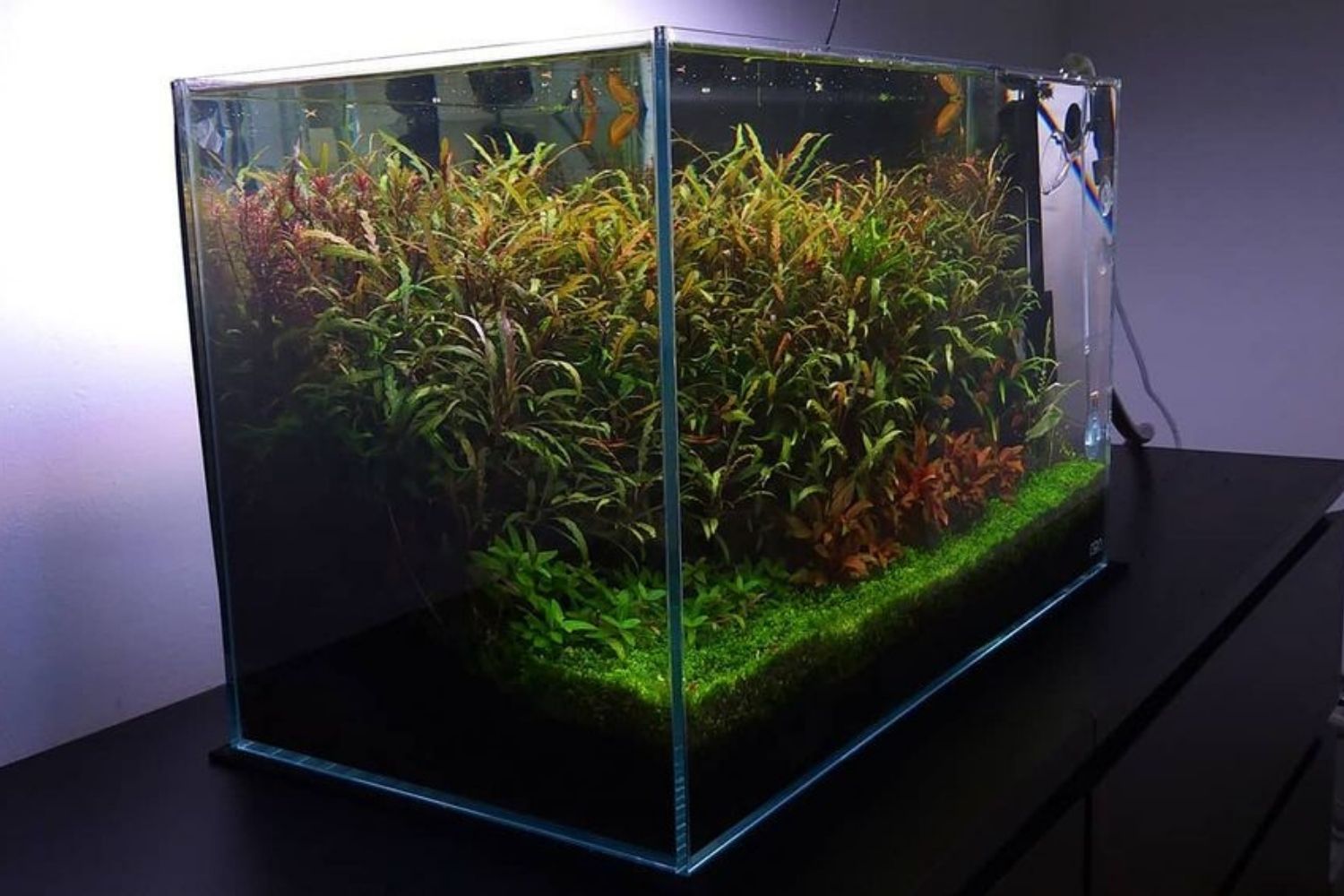
Hygrophila Pinnatifida at our aquarium. To have your like this, take care of it and let it grow without trimming.
